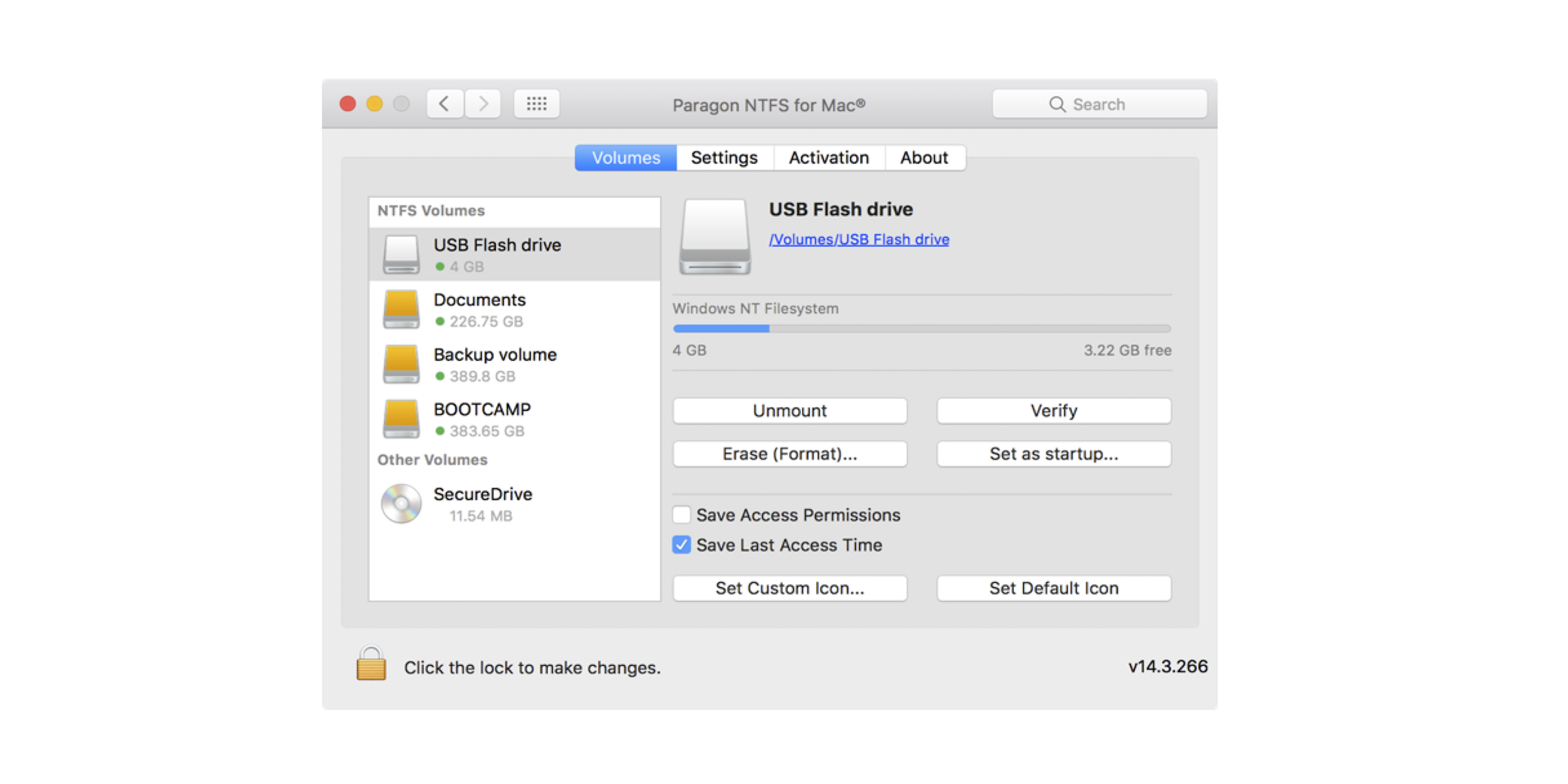
Step 3: Select “Mac OS Extended (Journaled)” in Format. A new window will pop up asking which file system you’d like to format the external drive to. By default, it’s the Windows NT File System (NTFS). Select the one shown below. Pro tip: If you want to use the external drive for both Mac and PC, you can also select “ExFAT”.
Finally, after nearly 20 years, Apple has transitioned frommacOS 10 to macOS 11. And now it’s macOS Big Sur – again after a Californianlandmark. The Big Sur brings an iOS-like UI interface, along with increasingthe speed and function of compatible machines. So now, if you are those who useboth Windows and macOS, you are probably wondering whether this update can letyour Mac write to Windows NTFS external drives. The truth is not a single wordis mentioned about the cross-platform compatibility issue in macOS Big Sur.
- Step 1 Connect your NTFS drive to your Mac and download, install, and launch the software on your Mac. When the software opens, click on your NTFS drive and hit the Scan button. Step 2 Let the software scan your drive to recover files. When the results appear, select the.
- Format NTFS to Enable NTFS Writing on Mac. The basic reason for not writing to NTFS on Mac is.
- NTFS for Mac is the best such software solution: Reliable, fast, and now affordable as well, version 14 (Paragon skipped unlucky number 13) provides unlimited read/write access to.
Through this guide, I will explore for you how to write toNTFS drives on macOS Big Sur.
Why can’t macOS just write to NTFS drives on Mac?
What is NTFS? NTFS (New Technology File System) is thedefault file system in Microsoft Windows since the 90s. The thing is, although Applelargely has support for Windows formats, like exFAT and FAT, write support toNTFS drives is disabled over decades. That means, when you plug an NTFS formattedexternal hard drive in Mac, you are not able to save files to the drive or editexisting files in there.
How to write to NTFS drives on macOS Big Sur?
There are several ways to do so. You can use third-partysoftware or enter a line of code. Let’s have a look at these options:
Solution 1: Use third-party NTFS for Mac utility
There is a bunch of software that offers you the completeability to read and write to NTFS format on Mac. You can search for it from theinternet and start using that. But I prefer to use iBoysoft NTFS for Mac (compatiblewith macOS Big Sur).
After a simple installation, you can just connect your NTFSdrives on Mac and then the drive will be automatically mounted in read-writemode. With the help of this NTFS driver, you can edit, copy, delete NTFS filesfrom your Mac computer. I can say that iBoysoft NTFS for Mac has the simplestand fastest process among other third-party software.
iBoysoft NTFS for Mac can be download for free for a 7-daytrial version, and then for purchase at $19.95 for a lifetime license.
Solution 2: Enable Mac writing to NTFS drives using Terminal
Apple actually allows you to write on NTFS drives, but thisis an experimental feature that is off by default. It can be switch on but thisshould be taken with a grain of salt. You can do this with Terminal by enteringsome complicated command lines. You can try your luck with the following steps:

Warning: This method is not recommended as it is unstableand not officially supported by Apple. It probably will corrupt your NTFS driveor come with the necessary risks. So please back up your important data beforefollowing these steps.

Step 1: First of all, you need to eject the external harddrive on Windows and rename the NTFS drive with a one-word name.
Step 2: Launch a Terminal. You can open it by navigating to Application > Utilities > Terminal.
Step 3: In the Terminal window, type the following commandand then enter admin password:
sudo nano /etc/fstab
Step 4: Enter the following command. Remember to replace theNAME with the label of your NTFS drive.
LABEL=NAME none ntfs rw,auto,nobrowse
Step 5: Once the command above is applied, you can savechanges by pressing Command + O. Then hold Command + X to close the Terminal.
Step 6: Plug your NTFS external drive on Mac. If the driveis connected, please re-plug them into Mac.
Step 7: To access the disk, you can click Go then Go tofolder. Type /Volumes into the box. You can now write to the NTFS drive asyou want.
Conclusion
Ntfs Driver For Mac
This post has explained two solutions to write to NTFSdrives on macOS Big Sur. You can use a third-party NTFS driver or enable Appleexperimental support to save some money. I have to say that the best bet forease of use will clearly be iBoysoft NTFS for Mac. But if you are comfortablewith Terminal, you can follow the solution 2 and enter some command lines tosee if it meets your needs.